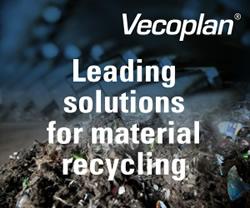Integration between solar and wind asset management software and monitoring software lets owners and operators automatically retrieve weather and production information, providing an up-to-date overview of the status of their portfolio.
 8 Reasons to Integrate your Monitoring System with an Asset Management Software
8 Reasons to Integrate your Monitoring System with an Asset Management Software

Edmee Kelsey | 3megawatt
Achieving Seamless Data Integration
Integration between solar and wind asset management software and monitoring software lets owners and operators automatically retrieve weather and production information, providing an up-to-date overview of the status of their portfolio. Some people in the industry have started to refer to this capability as an overlay monitoring system or an aggregating monitoring system.
In the past, retrieving data from monitoring systems involved spreadsheets and manually entering data into reports. Typically a renewable energy portfolio owner has multiple monitoring systems over different assets. This requires technical asset managers to log into the different monitoring portals every morning, download the information into a file and then copy and paste it into a master file. Sometimes portfolio owners have used internal IT staff to build a database to collect this information, but the maintenance and upgrading of the database to new data sources require a lot of internal IT resources and are not automatically updated.
Recently, most wind and solar monitoring systems are offering data access via API (data exchange protocols), which makes the integration with other software applications a lot easier. These API integrations create opportunities to push data into platforms that manage assets, reporting and even billing. Here are 8 ways connecting your monitoring and asset management platforms can streamline your business:
1. Eliminate redundancy
Integration between two systems increases productivity by eliminating the redundancy of managing two separate systems. Data in one system is automatically synced and updated in the second system, removing the need to input the same data twice and to input the data manually.
2. Improve decision-making
The information available in one system can be used to improve the decision making of users in the other system. For example, production information in one system can be used by commercial asset managers to check the statements from the local utility. Or the weather data can be used to explain variance in energy revenues.
3. Invoice all PPA off-takers through one system
If your monitoring system contains revenue grade meter (RGM) data, export meter data, grid injection meter data, or other meter operator data, integrating your monitoring and asset management software means that you can automatically generate invoices in one system according to a schedule, which streamlines the invoicing workflow.
4. Simplify reporting
Trying to reconcile data from separate systems can be a slow, error-prone process. Integration simplifies reporting by syncing the data between the two systems. It also means that you can pick and choose data from different solar plants or wind turbines on the fly and aggregate the data according to your own needs.
5. Maintain accurate asset registry
When parts are ordered and received through the ERP, the data is automatically synced with the CMMS to ensure everyone has real-time visibility on the status of replacement parts. In addition, if maintenance has upcoming preventive maintenance that requires replacement parts, they can check part availability in their CMMS and trust that inventory levels are accurate.
6. Increase productivity
Asset management software is designed specifically for technical and commercial asset manager with purpose-built interfaces and optimized workflows. The asset management team manages all activities within their asset management systems, which means they don’t need to enter the same data into two systems, and they don’t need to be cross-trained on how to use a monitoring system.
7. Avoid error
It may sound trivial, but a simple typo could mean ordering the wrong part through the ERP, leading to extended equipment downtime, missed orders and soured business relationships. With integrations, you’re letting your software talk directly to each other, which seriously decreases the chance of errors.
8. Improve timeliness
Integration can eliminate the time lag between entering the data into one system and taking action in a second. There’s no waiting for the information to be manually extracted from the monitoring system and entered into the asset management software, resulting in faster decision-making.
About 3megawatt:
3megawatt provides owners and operators of renewable energy portfolios with innovative tools to streamline their business in all stages of the asset lifecycle. 3megawatt cloud-based BluePoint software has become the industry standard for professional wind and solar asset managers who require an intuitive software solution to save time, improve efficiency, share knowledge and reduce portfolio risk. BluePoint is used to manage 26GW of solar, wind, hydro and storage assets in 35 countries. For more information visit 3megawatt.com.
The content & opinions in this article are the author’s and do not necessarily represent the views of AltEnergyMag
Comments (0)
This post does not have any comments. Be the first to leave a comment below.
Featured Product

